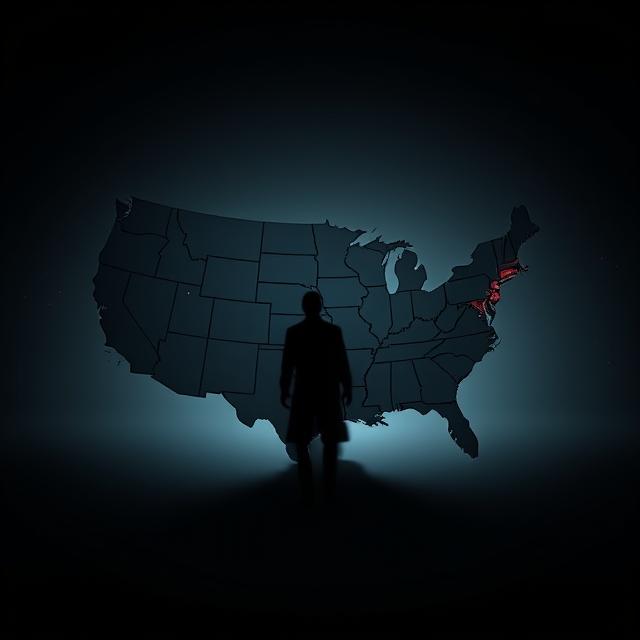Israel Keyes was a unique and terrifying figure in the landscape of American serial killers. Unlike many who are driven by impulse or a specific victim profile, Keyes was a meticulous planner who spent years preparing for his random acts of violence. Born in 1978, Keyes displayed antisocial tendencies from a young age. He had a fascination with violence and a deep-seated hatred for authority. He drifted through life, holding various odd jobs and maintaining a largely solitary existence, all while secretly orchestrating a nationwide campaign of terror.
Keyes’s crimes were characterized by their randomness and the significant effort he put into avoiding detection. He would often fly to different states, rent cars, and drive hundreds of miles to find his victims, ensuring he had no local ties to the areas where he committed his murders. This nomadic approach made it incredibly difficult for law enforcement to connect his crimes initially.
A key element of Keyes’s meticulous planning was the use of “kill kits.” These were caches of tools and weapons, including firearms, restraints, and cleaning supplies, that he buried in remote locations across the United States years in advance. When Keyes decided to commit a murder, he would travel to the vicinity of one of his kill kits, retrieve the necessary items, commit his crime, and then dispose of the kit, leaving behind minimal traceable evidence. This pre-planning demonstrated a level of organization and forethought rarely seen in serial killers.
Keyes’s known victims include Bill and Lorraine Currier, a couple who disappeared from their Essex, Vermont, home in June 2011. Keyes meticulously planned this abduction, breaking into their home and holding them captive before murdering them. He later confessed to their killings, providing chilling details of his preparation and execution.
Before the Currier murders, Keyes is believed to have been responsible for numerous other killings across the country, dating back as early as the late 1990s. He confessed to at least eight other murders, but the exact identities and locations of these victims remain largely unknown. Keyes was deliberately vague in his confessions, providing just enough information to confirm his involvement but withholding details that could lead to the recovery of the bodies or further identification. This calculated obfuscation added another layer to his terrifying persona.
One of Keyes’s confirmed earlier crimes was the murder of Samantha Koenig, an 18-year-old barista who was abducted from her Anchorage, Alaska, coffee kiosk in February 2012. Keyes flew from Vermont to Alaska specifically to abduct her. He held her captive, sexually assaulted her, and then murdered her. He even took a ransom photo of her after her death, attempting to extort money from her family. Keyes was eventually apprehended in Texas in March 2012, after using Koenig’s debit card.
Following his arrest, Keyes engaged in a series of interviews with law enforcement, revealing his long history of meticulously planned and executed crimes. His motivations appeared to be a thrill-seeking desire for control and the satisfaction of taking a life. He expressed no remorse for his victims and seemed to view his murders as a personal challenge, a way to outsmart the system.
Keyes’s case was particularly disturbing due to the random nature of his victim selection. He did not appear to target specific types of individuals or those with whom he had any prior connection. His victims were simply in the wrong place at the wrong time, falling prey to his years of careful planning and his urge to kill.
The investigation into Keyes’s crimes was a race against time to uncover the full extent of his violence before he could potentially harm others. However, Keyes died by suicide in his Anchorage jail cell in December 2012, taking many of his secrets with him. The true number of his victims and the full scope of his meticulously planned terror may never be known.
Israel Keyes stands as a chilling example of a serial killer who defied many of the established patterns. His long-term planning, his use of kill kits, his random victim selection, and his deliberate efforts to avoid detection made him a uniquely dangerous and elusive predator. His case forced law enforcement to reconsider their understanding of serial killers and the potential for highly organized individuals to commit seemingly unconnected crimes across vast distances. The shadow of his meticulously planned violence continues to linger, a haunting reminder of the unseen threats that can exist within our society.
Want to explore the shadows even deeper? For more chilling cases like this, visit SinisterArchive.com, where the legends are real.




